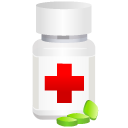HYPERHIDROSIS.NET
mini-invasives
technics

Marc FITOUSSI M.D
Vascular Surgeon.
18-22 Queen Anne Street
W1G 8HU London
+44 20 7034 3326
HYPERHIDROSIS.NET

Marc FITOUSSI M.D
Vascular Surgeon.
18-22 Queen Anne Street
W1G 8HU London
+44 20 7034 3326
NON SURGICAL TREATMENTS

Recommended as the first attempt to treat the disease.
The large number of available treatments are a reflection of how hard it is to get reliable results. Indeed, none of these available medical treatments have everlasting effects.
1 – LOCAL ANTIPERSPIRANTS
Not to be confused with deodorants that simply covers up the bad smell of body odors with fragrances.
Antiperspirants reduce sweat production
They are made up of metallic salts (aluminum or zirconium) that plug the sweat glands’ canals. Additionally, they possess antibacterial properties.
Side effects: possible rashes, redness or itching for certain individuals
Area: Mainly used under the armpits where they usually provide satisfying results these compounds are a lot less useful for palmo-plantar hyperhidrosis (hands and feet)
Products :
- Aluminum Chloride (20 to 25%) is the most efficient agent, to be applied 2 to 3 times a week.
- Formaldehyde
- Locally applied anticholinergics
- Antiperspirant sold over the counter are usually not very useful.
- Drysol® : Ethanol solution containing 20% of aluminum chloride
- Etiaxil
- Dr Benohanian’s gel
- Odaban
Armpit pads such as Purax are now available for purchase. Although they can’t prevent perspiration, they help contain it through absorption.
2 - IONTOPHORESIS
Iontophoresis is a technique using a small electrique charge to diminish the secretion of sweat through the skin.
For instance, both hands are submerged in 2 plastic containers containing water. In each container, an electrode is inserted, providing a 20 mA current. The procedure takes 20 minutes and is repeated multiple times a week.
Used only for hyperhidrosis of the hands and feet.
Results are usually satisfying but short lasting.
3 - MEDICATION
There no medication really targeting hyperhidrosis. However, the following drugs can be found to be of some therapeutic help. Ask your doctor’s advice first.
- Propanolol (Avlocardyl) : This beta blocker inhibits the nervous sympathetic system.
- Antidepressant, like Paxil or Aropax
- Les anxiolytics, like Xanax.
- Propylene glycol
- Clonidine (Catapresan) : anti-hypertension drug, alpha 2 sympathomimetics. Usual dose prescribed is 3 to 4mg a day.
- Ditropan
4 – BOTULINUM TOXIN (BOTOX)
This toxin block nervous transmissions toward sudoriferous glands.
It is an efficient treatment.
Unfortunately, the local injections are often very painful and require a deep anesthesia.
Moreover, the treatment will only last for a few months and its high cost is not reimbursed by health insurances.
Long term effects haven’t been evaluated yet, especially immunologically.
Treating axillary hyperhidrosis with Botox is authorized in France since November 2003 only for serious cases causing an important psychological and social impact in adults and children over 12 years old.

VASCULAR.EXPERT
mini-invasives technics
18-22 Queen Anne Street W1G 8HU London
+44 20 7034 3326